We use information collected through cookies and similar technologies to improve your experience on our site, analyze how you use it and for marketing purposes.
Your privacy settings
We and our partners use information collected through cookies and similar technologies to improve your experience on our site, analyze how you use it and for marketing purposes. Because we respect your right to privacy, you can choose not to allow some types of cookies. However, blocking some types of cookies may impact your experience of the site and the services we are able to offer. In some cases, data obtained from cookies is shared with third parties for analytics or marketing reasons. You can exercise your right to opt-out of that sharing at any time by disabling cookies.
Manage Consent Preferences
Necessary
Always ON
These cookies and scripts are necessary for the website to function and cannot be switched off. They are usually only set in response to actions made by you which amount to a request for services, such as setting your privacy preferences, logging in or filling in forms. You can set your browser to block oralert you about these cookies, but some parts of the site will not then work. These cookies do not store any personally identifiable information.
Analytics
These cookies and scripts allow us to count visits and traffic sources, so we can measure and improve the performance of our site. They help us know which pages are the most and least popular and see how visitors move around the site. All information these cookies collect is aggregated and therefore anonymous. If you do not allow these cookies and scripts, we will not know when you have visited our site.
Embedded Videos
These cookies and scripts may be set through our site by external video hosting services likeYouTube or Vimeo. They may be used to deliver video content on our website. It's possible for the video provider to build a profile of your interests and show you relevant adverts on this or other websites. They do not directly store personal information, but are based on uniquely identifying your browser and internet device. If you do not allow these cookies or scripts it is possible that embedded video will not function as expected.
Google Fonts
Google Fonts is a font embedding service library. Google Fonts are stored on Google's CDN. The Google Fonts API is designed to limit the collection, storage, and use of end-user data to only what is needed to serve fonts efficiently. Use of Google Fonts API is unauthenticated. No cookies are sent by website visitors to the Google Fonts API. Requests to the Google Fonts API are made to resource-specific domains, such as fonts.googleapis.com or fonts.gstatic.com. This means your font requests are separate from and don't contain any credentials you send to google.com while using other Google services that are authenticated, such as Gmail.
Marketing
These cookies and scripts may be set through our site by our advertising partners. They may be used by those companies to build a profile of your interests and show you relevant adverts on other sites. They do not store directly personal information, but are based on uniquely identifying your browser and internet device. If you do not allow these cookies and scripts, you will experience less targeted advertising.
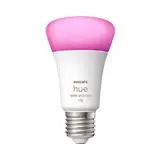
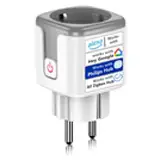
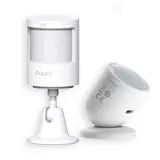
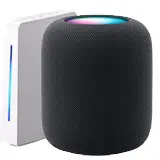
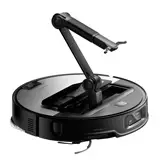

Activity trackers for dogs and cats: Are they worth it?
Ever wondered what your dog or cat gets up to when you're not home? Do they sleep all day or dedicate themselves to exploring every nook and cranny? Pet activity sensors have become a popular tool for monitoring the well-being of our furry friends. But are they really worth the investment? In this article, we'll explore the benefits, drawbacks, and everything you need to know about these devices.
What are activity sensors for dogs and cats?
Pet activity sensors are small devices that attach to your dog or cat's collar. They work similarly to human activity trackers, like Fitbit or Apple Watch. They record data such as the amount of physical activity, rest time, sleep quality, and some can even detect unusual behaviors. This data syncs with an app on your phone, giving you valuable insights into your pet's daily routine.
How do they work?
Most sensors use accelerometers to measure movement. Some also incorporate GPS to track your pet's location and temperature sensors to monitor their environment. These devices continuously collect data and send it to your phone via Bluetooth or Wi-Fi. The app analyzes the information and presents you with detailed reports and easy-to-understand graphs.
Benefits of using an activity sensor for your pet
Using an activity tracker for your dog or cat can give you a wealth of valuable information about their health and well-being. Here are some of the most important benefits:
What types of pets are activity sensors suitable for?
Activity sensors can be beneficial for a wide variety of pets, but are especially useful for:
Key features to consider when choosing an activity sensor
Not all activity trackers are created equal. When choosing one for your pet, it's important to consider the following features:
Disadvantages of pet activity sensors
While activity sensors offer many benefits, they also have some drawbacks you should consider:
Popular activity sensor examples for dogs and cats
Many activity trackers are available on the market. Here are some of the most popular ones, along with their key features:
How to interpret the data provided by the sensor
Once you've chosen an activity tracker and are using it, it's important to know how to interpret the data it provides. Here are some tips:
Tips for effectively using an activity tracker
To get the most out of a pet activity tracker, follow these tips:
Animal Activity and Welfare Sensors: Ethical Considerations
While activity sensors can improve pet wellbeing, it's important to use them ethically and responsibly. Don't use the data to judge or punish your pet. The goal is to better understand your needs and provide you with the care you need to thrive.
Also, keep data privacy in mind. Carefully read the sensor manufacturer's privacy policies and make sure your data is protected. Avoid sharing personal information about your pet online without your consent.
Alternatives to activity sensors
If you're unsure if an activity sensor is right for your pet, there are other ways to monitor their health and well-being:
Conclusion: Are pet activity trackers worth it?
Activity sensors for dogs and cats can be a valuable tool for monitoring your pet's health and well-being. They offer a wealth of information that can help you identify health problems, prevent obesity, improve behavior, and ensure your safety. However, it's important to consider the disadvantages, such as the cost and potential discomfort to the pet, before making a decision.
If you're willing to invest the time and effort to use an activity sensor effectively, it can be a great addition to your pet's care routine. But if you're unsure, there are other ways to monitor their health and well-being.
Did you find this article helpful? Share your experience or questions in the comments section. Your opinion matters!
Related Posts
Smart cameras to monitor your pets when you're away from home.
Worried about what your pets do when you're not home? Curious if your dog is barking excessively or if your cat is sleeping peacefully on your favorite armchair? The solution is here: smart pet cameras! These cameras aren't just for watching your furry friends, they're a powerful tool…
Smart pet feeders: How to feed your pet remotely
Worried about leaving your pet home alone? Feeling guilty about missing meal times? Worry no more! Smart pet feeders are the perfect solution for feeding your furry friend remotely. With today's technology, it's easier than ever to keep your pet healthy and…
How to set up food and water alerts for your pets
Worried about forgetting to feed or water your pet? You're not alone! Modern life is hectic, and sometimes even the most important tasks get away from us. But don't worry, we have the solution! In this article, we'll walk you step-by-step through setting up food and water alerts for your pets, ...
Can voice assistants help with pet care?
Can you imagine your voice assistant helping you take care of your pet? It sounds like science fiction, but technology is advancing by leaps and bounds. They are no longer just for playing music or reminding you of appointments. Now, they can become important allies in the well-being of our furry, feathered or scaly companions. How Voice Assistants ...